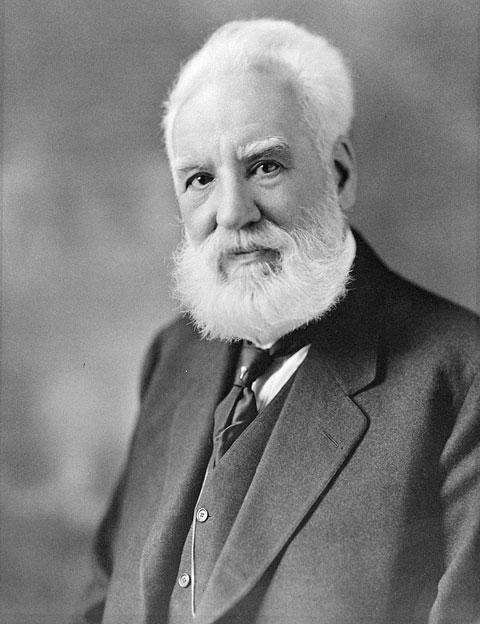Alexander Graham Bell, the inventor of the telephone, was also a renowned scientist, engineer and educator. Born in Edinburgh, Scotland in 1847, he was the son of Alexander Melville Bell, a renowned speech teacher, and Eliza Grace Symonds Bell, who was deaf. This background provided Bell with a unique perspective on the power of speech and communication, which he would later use to create one of the most important inventions of all time: the telephone.
Bell’s interest in communication devices and speech began at an early age. He taught his mother and wife to speak, and went on to study speech and elocution at the University of London. He also worked with his father on various speech devices, including a machine that could transcribe speech sounds into visible symbols. This interest in speech and communication would eventually lead him to invent the telephone.
In 1875, Bell filed the first patent for his invention of an “improvement in telegraphy,” which he described as “a method of and apparatus for transmitting vocal or other sounds telegraphically.” The patent was granted on March 7, 1876, and the first successful telephone call was made between Bell and his assistant, Thomas Watson, later that year. The telephone was an instant success, and Bell soon formed the Bell Telephone Company to manufacture and sell telephones.
But Bell’s interests and contributions to science and communication did not end with the telephone. He was also a prolific inventor and innovator, holding over 18 patents in his lifetime. One of his most significant inventions was the audiometer, a device used to measure a person’s ability to hear sounds of different frequencies and volumes.
Bell’s invention of the audiometer was driven by his desire to help people with hearing loss. He had a personal interest in this area, as his wife and mother were both deaf. He believed that by measuring a person’s hearing ability, he could better understand and treat hearing problems. The audiometer allowed doctors and audiologists to accurately measure a person’s hearing ability and determine the most effective treatment.
The audiometer consists of a series of headphones and a tone generator. The user wears the headphones, and the tone generator produces a series of sounds of different frequencies and volumes. The user indicates when they can hear each sound, and the audiometer records the results. The results are then used to create an audiogram, which is a graphical representation of a person’s hearing ability.
Bell’s audiometer was groundbreaking in its accuracy and simplicity. Prior to its invention, hearing tests were often subjective and unreliable. The audiometer provided a standardized and objective method for measuring hearing ability, and it quickly became an essential tool in the field of audiology.
The audiometer was also an important step in the development of modern hearing aids. By accurately measuring a person’s hearing ability, the audiometer allowed manufacturers to design hearing aids that were tailored to the individual’s needs. Today, the audiometer remains an essential tool in the diagnosis and treatment of hearing loss.
In conclusion, Alexander Graham Bell was a visionary inventor and scientist who made significant contributions to the fields of communication and audiology. His invention of the telephone changed the world, and his audiometer provided a crucial tool for understanding and treating hearing loss. Bell’s legacy continues to inspire and influence us today, and he will always be remembered as one of the greatest inventors of all time.










